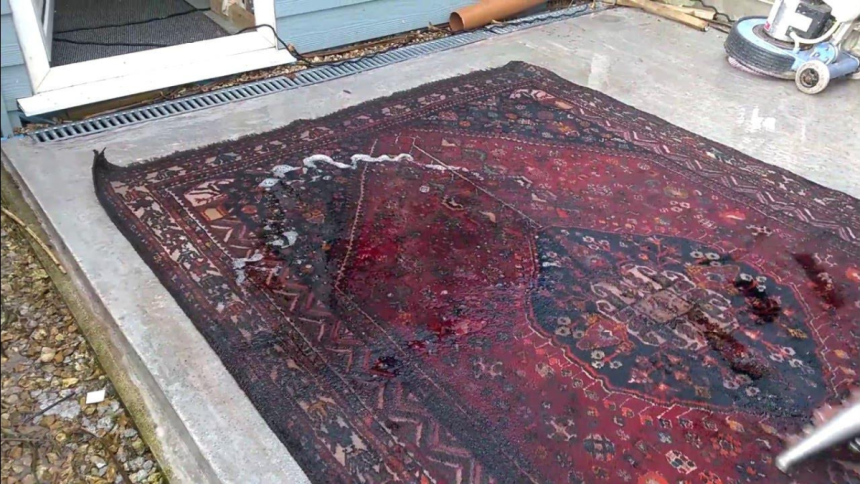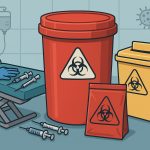Water damage is one of the most stressful and costly emergencies a homeowner can face. Whether it’s caused by a burst pipe, heavy rains, or a malfunctioning appliance, the aftermath can be overwhelming—especially when your home’s valuable textiles are affected. Rugs, in particular, are highly vulnerable. They absorb moisture rapidly, hold onto contaminants, and can quickly begin to deteriorate if not treated promptly and properly.
Fortunately, a professional rug restoration service can make all the difference between salvaging your treasured rug and having to replace it. In this article, we’ll explore the steps you should take immediately after water damage occurs, why professional restoration is critical, and how to prevent future rug disasters.
Understanding the Threat: Why Water Damage Is So Destructive
When rugs are exposed to water, the damage isn’t always visible at first. Moisture seeps deep into the fibers and padding, creating a breeding ground for mold, mildew, and bacteria. Within 24 to 48 hours, microbial growth can begin—especially in humid environments.
Natural fiber rugs, such as wool, silk, or cotton, are particularly susceptible. They can shrink, discolor, or weaken if not handled properly. Even synthetic rugs aren’t immune; they can develop odors or become structurally compromised if saturated for too long.
Water damage also draws in contaminants from floodwater or backed-up plumbing, introducing harmful substances into your home. Quick and expert action is essential to minimize the impact.
What to Do Immediately After Discovering Water Damage
If your rug has been exposed to water, acting fast is your best defense. Here’s what you should do:
- Remove the rug from the water source as soon as it’s safe to do so.
- Blot excess water with towels—do not rub, as this can spread stains and distort fibers.
- Elevate or hang the rug to promote air circulation and reduce further saturation.
- Avoid applying heat, such as a hair dryer or heater, which can cause shrinkage or set in stains.
- Contact a professional rug cleaning and restoration specialist immediately.
Timing is everything. The sooner your rug receives professional care, the greater the chance it can be fully restored.
The Professional Restoration Process
A trained rug restoration company will begin by thoroughly inspecting the rug to assess its material, age, construction, and the extent of the damage. From there, they implement a series of specialized steps:
- Dusting and debris removal: This eliminates dry particles before moisture deep-cleaning begins.
- Submersion cleaning: The rug is soaked and gently agitated in a cleaning solution tailored to its fiber type.
- Rinsing and water extraction: High-powered machines remove all excess water and cleaning agents.
- Decontamination: Antimicrobial treatments help prevent mold, mildew, and odor formation.
- Drying in a controlled environment: Using air movers and dehumidifiers, rugs are dried slowly and evenly to preserve their shape.
- Grooming and final inspection: The pile is reset, fringe repaired if needed, and the rug is brushed to restore its original luster.
This process is both art and science, requiring experience, the right equipment, and knowledge of fiber behavior under stress.
Don’t Skip the Professional Touch
Some homeowners attempt to clean water-damaged rugs themselves with shop vacs or household fans. While these tools may remove surface moisture, they won’t extract what’s deep within the fibers or padding. Worse, improper handling can lead to irreversible damage—shrinking, bleeding dyes, or even spreading mold throughout your home.
A certified professional ensures not only aesthetic recovery but also health and safety. They use industry-standard techniques and products that are gentle on delicate materials while effective against pathogens.
What About Antique or Heirloom Rugs?
Older and handmade rugs require even more caution. The dyes used in vintage or imported pieces are often non-colorfast, meaning they can bleed or fade with water exposure. The weaving may also be more delicate, requiring gentle hand-cleaning rather than mechanical methods.
Reputable restoration services will identify these risks and use minimally invasive techniques, preserving both the beauty and value of heirloom pieces.
Preventing Future Water Damage
While no home is immune to water emergencies, there are steps you can take to reduce the risk:
- Install moisture alarms near appliances and plumbing
- Check and maintain your sump pump, if applicable
- Seal basement floors and walls against leaks
- Avoid placing valuable rugs directly over air vents, near exterior doors, or beneath plumbing fixtures
- Use rug pads that offer moisture protection and reduce floor contact
These measures won’t stop water damage entirely, but they can buy valuable time and minimize its severity.
When Recovery Is Possible, Replacement Isn’t Necessary
It’s heartbreaking to see a treasured rug soaked and seemingly ruined. But with expert help, many rugs can be returned to their original condition—or even better. A high-quality restoration doesn’t just fix the problem; it refreshes the rug, removes years of built-up dirt, and enhances its durability.
Instead of discarding a cherished item, trust the specialists who understand how to bring it back to life. The right restoration service can save you time, money, and memories.
Lynn Martelli is an editor at Readability. She received her MFA in Creative Writing from Antioch University and has worked as an editor for over 10 years. Lynn has edited a wide variety of books, including fiction, non-fiction, memoirs, and more. In her free time, Lynn enjoys reading, writing, and spending time with her family and friends.















